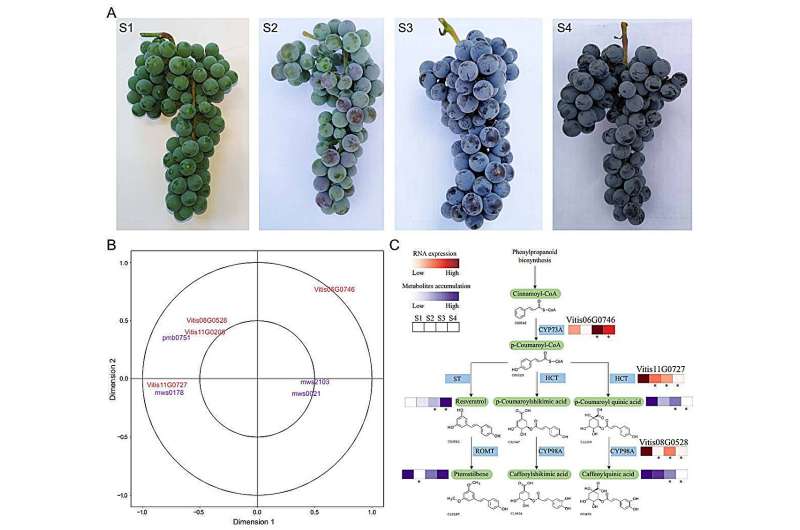This article has been reviewed according to Science X's editorial process and policies. Editors have highlighted the following attributes while ensuring the content's credibility:
fact-checked
peer-reviewed publication
proofread
Unlocking the genetic code of Amur grape: Insights into plant cold tolerance and evolution

The Amur grape, indigenous to eastern Asia, is known for its remarkable cold tolerance, able to withstand temperatures as low as -40°C. Despite its significant potential for breeding and agricultural applications, the absence of high-quality genomic data has limited advancements in understanding and improving this species.
This gap in knowledge necessitated a comprehensive genomic study to elucidate the genetic mechanisms underlying its cold resistance and sex determination, which are critical for enhancing grape breeding and cultivation practices.
Scientists from the Shandong Academy of Grape and collaborating North China University have made a significant stride in viticulture research. Published in Horticulture Research, the study presents a high-quality genome sequence of the Amur grape, offering a treasure trove of data for future biological and breeding studies.
The assembled genome of the Amur grape spans approximately 522 Mb and includes 27,635 coding genes. Phylogenetic analysis indicates that Vitis riparia diverged first among the grape species examined.
The data reveal that the Amur grape's exceptional cold tolerance is due to a robust network of cold resistance genes, which have evolved uniquely in this species. Additionally, multi-omics analysis identified significant genes responsible for resveratrol accumulation during berry development.
A key discovery is the identification of a potential sex-determination region through selective sweep analysis. This region contains genes that may play a crucial role in determining the sex of the plants, which is vital for breeding practices.
These findings provide valuable insights into the genetic factors that contribute to the Amur grape's resilience and reproductive traits, offering new avenues for grape breeding and cultivation.
Dr. Hongjun Zhao, corresponding author of the study, emphasizes the importance of this research, stating, "Our work not only illuminates the evolutionary journey of the Amur grape but also equips us with critical knowledge to enhance grape breeding programs, potentially leading to varieties better suited to climate extremes."
The applications of this research are manifold, ranging from the cultivation of cold-resistant grapevines to the broader understanding of plant sex determination.
The insights could revolutionize viticulture practices and contribute to the development of crops that can withstand the harsh effects of climate change, ensuring food security and agricultural sustainability.
More information: Pengfei Wang et al, De novo assembling a high-quality genome sequence of Amur grape (Vitis amurensis Rupr.) gives insight into Vitis divergence and sex determination, Horticulture Research (2024). DOI: 10.1093/hr/uhae117
Journal information: Horticulture Research
Provided by North China University



















